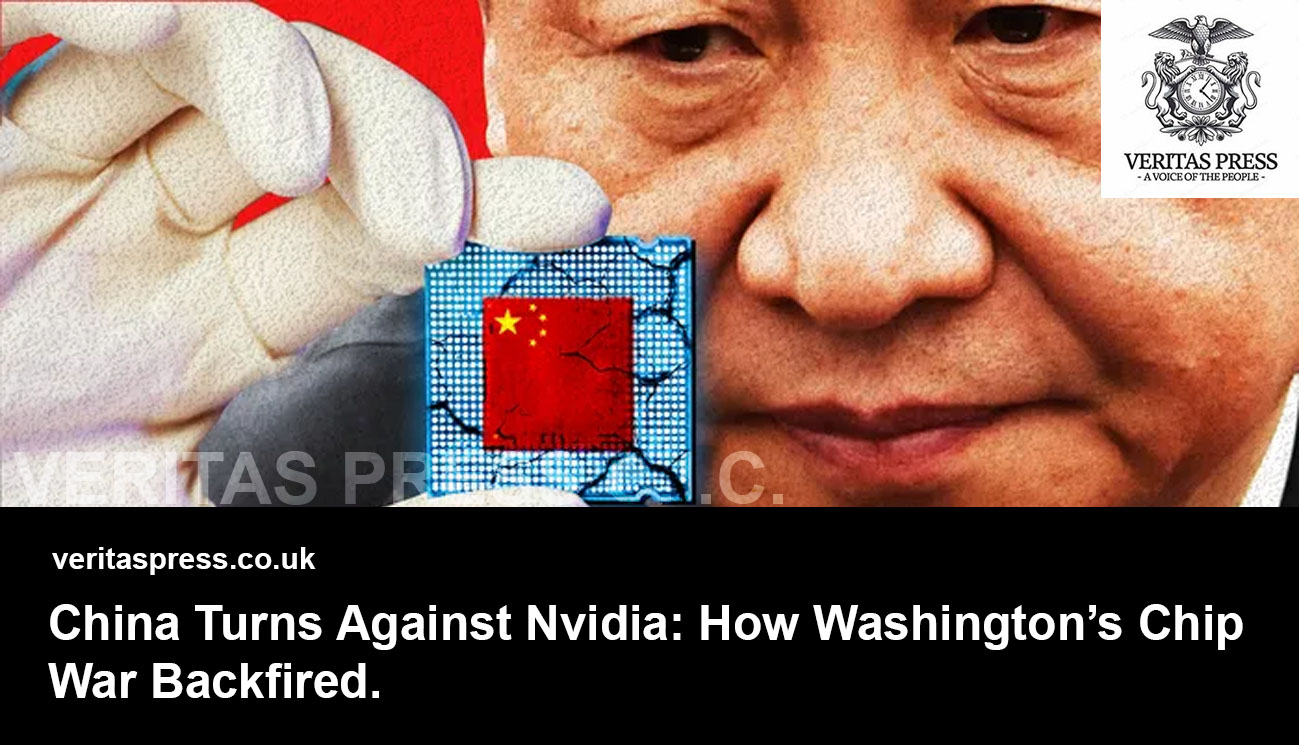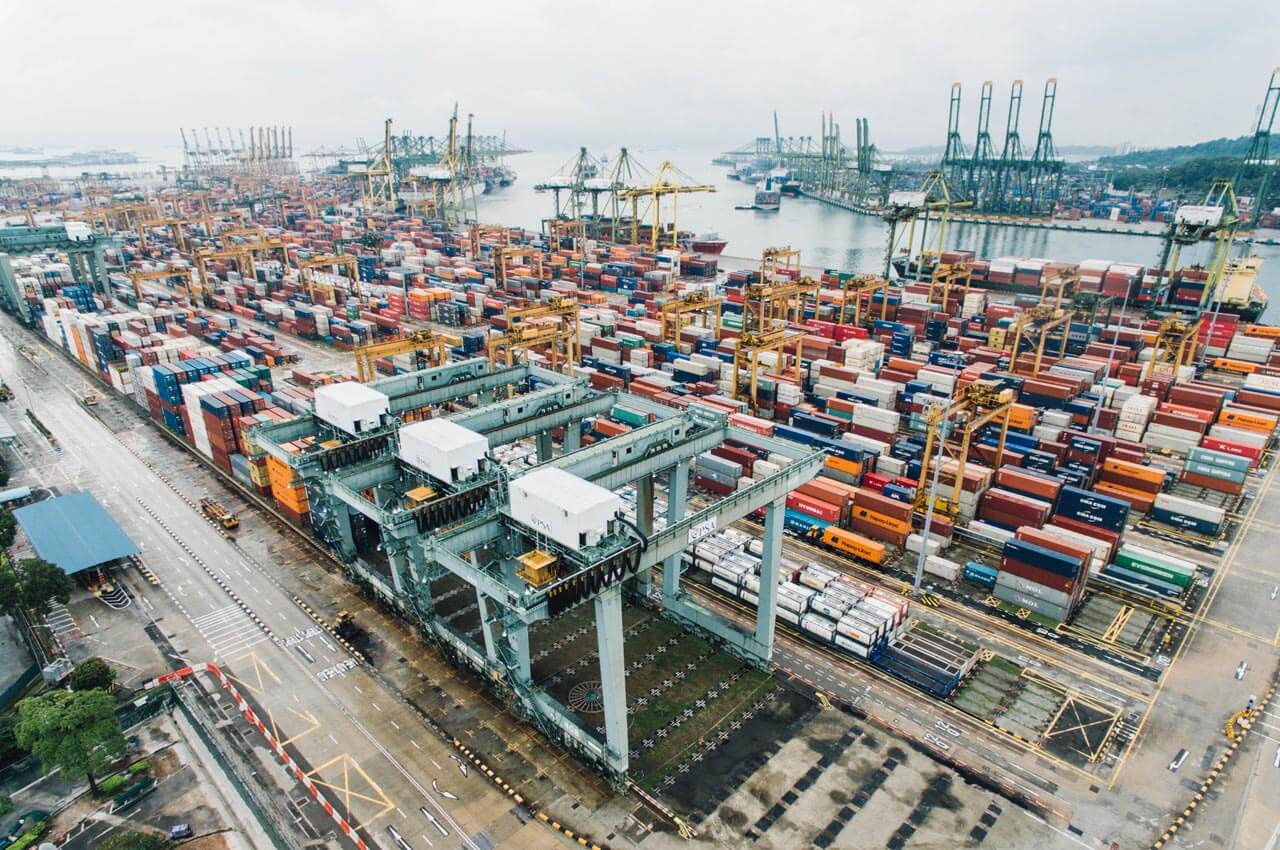Press Release: Veritas Press C.I.C. Author: Kamran Faqir Article Date Published: 21 Aug 2025 at 14:27 GMT Category: Asia | China | Chip War Source(s): Veritas Press C.I.C. | Multi News Agencies
The Warning Call:
In early August, executives from China’s biggest tech platforms were summoned to a discreet meeting with regulators. On the agenda: Nvidia’s H20 artificial-intelligence chip, a processor already deeply embedded in the country’s AI boom. The message, according to multiple people briefed on the talks, was clear if not formally binding: stop buying American.
It wasn’t a legal ban, but a pointed form of pressure. Regulators at the Cyberspace Administration of China (CAC), the Ministry of Industry and Information Technology (MIIT), and the powerful National Development and Reform Commission (NDRC) each weighed in, urging Alibaba, ByteDance, Tencent, and Baidu to abandon orders of the H20.
That pressure campaign marks the sharpest turn yet in Beijing’s semiconductor strategy. What began as caution under U.S. sanctions has now become active substitution: a coordinated push to replace American hardware with Chinese silicon across state projects and corporate deployments.
The Catalyst: An “Insulting” Remark.
According to sources in Beijing, the crackdown was not sparked by technology alone, but by politics.
In July, U.S. Commerce Secretary Howard Lutnick told CNBC: “We don’t sell them our best stuff, not our second-best stuff, not even our third-best.”
Senior Chinese officials saw the remark as a public humiliation. Within days, regulators began crafting informal “window guidance” that instructed Chinese companies to halt H20 purchases.
“Lutnick’s speech gave the coalition [of regulators] one more reason to intensify its efforts to push tech firms to use China’s own chips,” one person close to the matter told the Financial Times.
Security Fears, Or Political Cover?
Publicly, Chinese state media echoed a different justification: security.
The CAC alleged Nvidia’s chips contained “location-tracking functionality” and could be remotely disabled, a claim Nvidia has strongly denied. State-linked outlets described the H20 as unsafe, energy-inefficient, and strategically risky for critical systems.
To Beijing, that framing justifies the pivot to domestic champions like Huawei, Biren, and Cambricon. To Washington, it looks like political theatre, designed to insulate China’s tech sector from further U.S. leverage.
The Policy Reality: Quotas Without Laws.
While no ministerial decree has been published, industry insiders describe a de facto procurement quota: publicly funded data centres must source at least half their chips from Chinese vendors.
Enforcement is subtle but effective. “Procurement officers are behaving as if the quota is mandatory,” one supplier said. “If you want your project approved, you buy Chinese.”
The result? U.S. accelerators are being sidelined from government-linked builds, even without a formal ban.
Nvidia’s Bind:
For Nvidia, the H20 was supposed to be the compromise chip, the “safe” processor designed to comply with U.S. export rules while still keeping a foothold in China.
Instead, it has become the focal point of geopolitical rivalry.
Yet paradoxically, demand inside China remains enormous. In July, Nvidia quietly asked TSMC to produce 300,000 additional H20 chips to meet surging orders, even as regulators were warning buyers off.
Huawei Steps In:
Meanwhile, Huawei is seizing the opportunity. Its Ascend 910C accelerator is rapidly becoming the default compute engine for state-linked projects. Reuters reports that mass shipments this year have occurred, with procurement officers instructed, formally or informally, to prioritise the chip over foreign alternatives.
China’s largest AI firms are now testing dual-track deployments: legacy Nvidia clusters for existing production workloads, and Ascend systems for new growth workloads.
The message is clear: Nvidia may still be used, but it will no longer be trusted as the foundation.
U.S. Firms at Risk;
The stakes are enormous. Qualcomm generates over 60% of its revenue from China. Apple relies on Greater China for nearly one-fifth of global sales. Tesla’s Shanghai factory produces more than 700,000 cars annually.
If Beijing’s semiconductor nationalism bleeds into consumer electronics or EV supply chains, the ripple effects could undermine entire business models.
Washington’s Policy Whiplash:
The U.S. export-control strategy itself remains unsettled. After years of maximum-pressure bans, the Trump administration introduced a revenue-sharing scheme: Nvidia and AMD must surrender 15% of China’s AI chip sales to the U.S. Treasury.
At the same time, Trump has floated allowing “lesser versions” of Nvidia’s Blackwell chips to ship to China. The result, according to industry executives, is a landscape of “policy whiplash”—constant shifts that complicate long-term planning.
Analysts See Parallel Universes Emerging:
Independent analysts caution that China’s chips still lag Nvidia in throughput and software ecosystems. But the state’s relentless mobilisation, funding tooling, compiler frameworks, and systems engineering will close many gaps over time.
MERICS calls it “capability under constraints.” The Lowy Institute describes it as “partial catch-up with political momentum.”
The long-term risk, analysts say, is fragmentation: duplicated ecosystems, diverging standards, and lost feedback loops. China will pay higher costs; U.S. firms will lose scale and influence.
The Bottom Line:
What was once framed as Washington cutting China off from advanced silicon now looks increasingly like a two-way decoupling.
- China is turning administrative nudges into procurement mandates.
- U.S. suppliers face eroding market leverage, even when demand exists.
- The global AI race is splintering into parallel hardware and software universes.
As one Asia-based analyst put it: “The U.S. slowed China’s access to the top tier. But in doing so, it may have permanently locked itself out of the middle tier.”
The semiconductor war is no longer about chips alone; it’s about pride, politics, and permanence.
Tags:




























Leave a Reply